Volksbühne Berlin Season Magazine 2013/2014


Photo: Florian Hardwig. License: CC BY-SA.
Posted as an addendum to my blog article about the Volksbühne poster campaign.
Volksbühne's spielzeitheft – the season magazine – for 2013/14 is a large-format brochure (DIN A3) with 88 pages. There are a number of black-and-white photos by Lenore Blievernicht, but most of it is purely typographic. As with the posters, a mix of blackletter typefaces has been used, but here the palette is even wider.
Typesetting German text in blackletter traditionally requires two forms for the lowercase 's': the 'long s' (ſ) is the default. The round one, with which we are more familiar today, may only go at the end of words (more precisely: at the end of morphemes, which include prefixes or parts of compounds). The rules are in fact slightly more complicated than that, but not much. If you are interested, you can find a serviceable guideline by Friedrich Forssman both in Albert Kapr's Fraktur and in Judith Schalansky's blackletter orgy that is the new identity of the Volksbühne Berlin, these orthotypographic rules have been ignored, much to the regret of the typography teacher in me. If you choose to use blackletter, I feel you should go all the way, and respect the special rules that come with the genre. Seeing an 'ſ' in final position like in-haus, das, Eins etc. hurts my eyes. Having an inappropriate 'ſ' in the middle of a word is worse. The theater's name should have an 's', because it is Volks·bühne ("people's theater"). With an 'ſ', it reads Volk·sbühne, which is nonsense. It is similar to wrong hyphenation, think the·rapist vs. ther·apist.
It would have been understandable if LSD decided to dispense with the 'ſ', because it is so uncommon today. Heck, I could possibly even understand it if they used 'ſ' exclusively, for it is such a weird character! What they did, however, is always using the default glyph of the respective font. Sometimes that's the 's', sometime the 'ſ'. (Note that almost all digital blackletter fonts come with both forms, even the freebies.) A pragmatic decision? I call it lazy and ignorant. But who knows – maybe the ignorance is intentional, and the carefreeness with which the rules were violated is another factor that helps undermining the historic burden of German blackletter in general, and of the simplified gotisch types from the 1930s in particular.

Photo: Florian Hardwig. License: CC BY-SA.
"The Youth Theater" – the word Jugend in Tannenberg looks familiar, but it's not a comfortable association.

Photo: Florian Hardwig. License: CC BY-SA.

Photo: Florian Hardwig. License: CC BY-SA.
The schmal (condensed) cut of Rudolf Koch's Wallau is another typeface that was released in 1934.

Photo: Florian Hardwig. License: CC BY-SA.
A series of video presentations by Tannenberg Fett (1934).

Photo: Florian Hardwig. License: CC BY-SA.
The German umlaut dots on 'äöü' once started life as a superscript 'e'. Linotype Textur exhibits this historic form.

Photo: Florian Hardwig. License: CC BY-SA.
The blackletter hyphen typically is double and slightly angled. When centering lines horizontally, make sure to adjust optically and compensate for hyphens and other punctuation. Of course, this only applies when you're aiming for fine typography. LSD Design obviously isn't.

Photo: Florian Hardwig. License: CC BY-SA.
Baumeister needs a 'long s', and ideally an 'ſt' ligature. Wilhelm-Klingspor-Schrift indeed has such a ligature, even in the digital versions. Furthermore, in German blackletter, there can never be two 'round s' in a row. At the end of words, a double 's' becomes an eszett: Solneß.

Photo: Florian Hardwig. License: CC BY-SA.

Photo: Florian Hardwig. License: CC BY-SA.
Three lines of Deutsche Reichsschrift (1915–35) by Arthur Pestner. The third word reads Eins ("one"), not Einf. It should be with a round 's', though, as it is the last letter in the word.

Photo: Florian Hardwig. License: CC BY-SA.
Bayreuth (1932 or 1935) paired with Schmalfette Gotisch (1934). Both typefaces were originally designed by F.H. Ernst Schneidler. Schottenstück should be with an 'ſ' and ligatures for 'ch' and 'ck'.

Photo: Florian Hardwig. License: CC BY-SA.
12-Spartenhaus is set in National Fett (1934). The roman numerals on the verso denote the month of the event – this play is staged from October. The numerals as well as the small print is in Akzidenz-Grotesk.

Photo: Florian Hardwig. License: CC BY-SA.
The cover and a few divider pages like this one are printed in orange. Only there, the letterforms are scribbled. The rest shows the glyphs as they are included in the fonts, be they razor-sharp or chubby. The stacked letters for neu ("new") were handdrawn after the ultrablack Avebury, which was designed in 2005 by Jim Parkinson, "inspired by an early blackletter from the Caslon Foundry".

Photo: Florian Hardwig. License: CC BY-SA.
Volksbühne in Tannenberg – just like it was in 1936? Not really: it's handdrawn, it's in bright orange, and it doesn't give a damn about the s-rules.






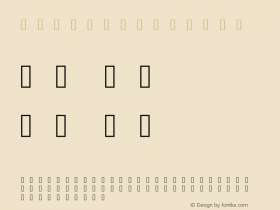













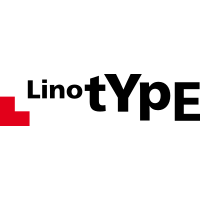




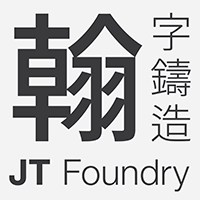
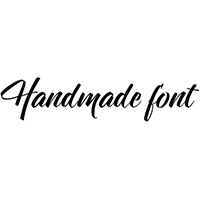

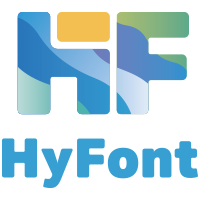








 闽公网安备35010202000240号
闽公网安备35010202000240号